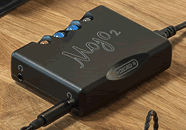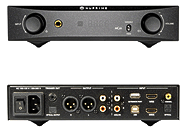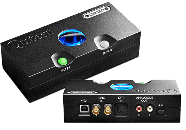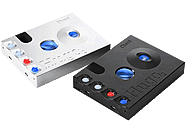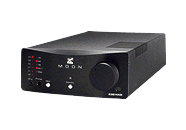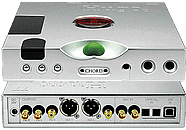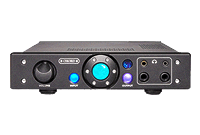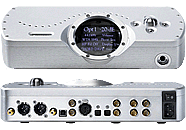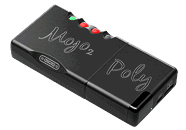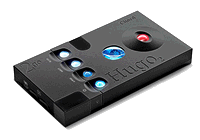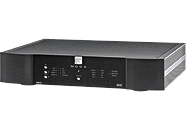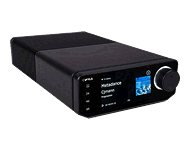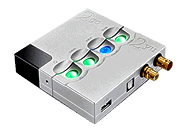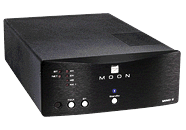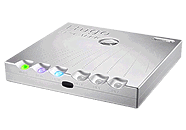DACs & Streamers@kemela
Except for purist analog systems, DACs are as universal in High Fidelity sound systems as speakers and an amplifier. Today's DACs offer excellent price/performance ratios and sound more natural compared to those of 20 years ago. Downloaded 24-bit high resolution digital files are the new format and require a good DAC to demonstrate their superior sound quality compared to 16-bit CDs. With faster internet conections available, streaming services are also offering 24-bit sound.
Keeping up
The cost of quality Digital to Analog conversion with minimal artifact has come down with the availability of powerful chips togther with improved circuits with better designed layouts and power supplies. Specialized configurable FPGA chips, like CPU chips, have grown in capabilty and permit processing complex mathematical algorhythms on vast scale in a very short space of time for those manufacturers with the knowledge, experience and resources to develop these ground up technologies. This approach permits a more highly specialized approach to latency, filering, and noise shaping that are key to Hi-Fi sound quality can be more addressed than required in typical applications for DACs such as household appliances, computers, automobiles etc. With off-the-shelf chips, the processes have to be built around the fixed architecture of a chip that can not be modified but these improve over time aspiring to reach the more cutting edge FPGA designs.
What difference will I hear with a better DAC?
It's not too hard to appreciate the difference in sound quality of a modern DAC compared to an older one. Bass is far better defined and high frequencies are sweeter and more delicate. Instruments with strong energy transients, such as drums and pianos, sound more natural with greater dynamic impact and rhythms are more intentionally defined. The sound stage is better organized with greater separation, depth, space and layering. There is less of a gap between the end of one track and the start of another because decays are heard for longer while complex passages with a lot happening sound less homogenized.
With more processing power, higher resolution recordings are more easily handled offering more of everything and a more natural sound. In a performance balanced system with high quality components and cabling throughout, a good DAC will reveal a greater sense of being at the mixing desk with indications of the type of microphone, the art of microphone placement, compression and permitted dynamic range scaling for reproduction in your listening space. The talents of the recording and mastering engineers are appreciated in the better recordings while older recordings will reveal their limitations.
Online Streaming Services
Music streaming subscriptions have grown considerably in the past decade and accounts for over 80% of the music industries revenue and over 80 million Americans listen to music using a premium streaming service. A huge collection of very good sound quality tracks are available to stream from Qobuz, Tidal, Spotify and others. Easy to use affordable products make streaming very straight forward. What's stopping you from exploring music through these online services or building your own library of studio quality versions of your favorite music?
Faster internet has afforded a significant boost in sound quality that is well worth the premium subscription rate of the music services but the full value is only realized if these services are streamed on high quality audio streamers and DACs. Convenience was the initial appeal of these services, but savvy consumers have come to appreciate that better sound quality enhances their enjoyment and new music discovery.
Wireless versus Wired Networks and Multi-room Synchronized Audio
Many Hi-Fi streaming products let you play your music in multiple rooms simultaneously. You can broadcast the same music synchronized across multiple rooms or each room can play a different track - all controlled by apps you can install on tablets or phones. These products can use wired or wireless networking and are hugely less expensive than project managed, console programmed, custom-installed distributed audio systems. More rooms can easily be added and you can take the equipment with you if you move house. They will handle higher resolution than mass-market products that initially dominated this area. Today's wireless routers have powerful transmission ability that is more resilient to interference but a wired ethernet connection is still the best. With more cell phone users, you may have noticed the increasing number of utility pole-mounted small cell transmitters in your area. As the density of users increases requiring greater encoding on a given bandwidth, the transmission range goes down so more tansmitters are needed. An unfortunate side effect is that our airways are becoming increasing full of signals that our Hi-Fi systems are sensitive to.
Bluetooth technology has the advantage of offering lower power consumption helping prolong battery life in portable devices. Simple pairing makes connecting easier than setting up a network connection and so is great for people bringing music to parties. However it compromises 16-bit music and is not high resolution.
Advice and support
kemela provides great support to get you up and running and build your confidence in being able to manage digital files.
With streaming products, having access to good support is more important than any other audio component.
-
None
-
None
